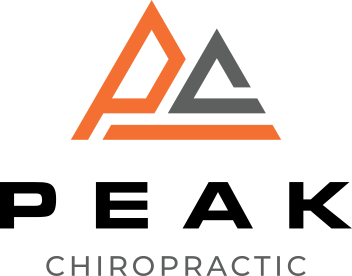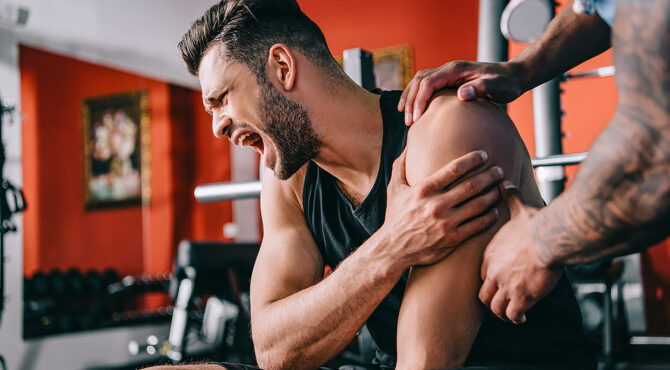When you think about improving joint flexibility, it's essential to take into account the various therapy techniques that can help you achieve your goals. You might find that a combination of targeted exercises and specialized methods, like proprioceptive neuromuscular facilitation, can greatly enhance your mobility. Each approach has its merits, but understanding which techniques best suit your needs can make all the difference. What specific strategies should you incorporate to maximize your joint flexibility and overall well-being?
Understanding Joint Flexibility
Joint flexibility refers to the range of motion your joints can achieve, and it plays an essential role in overall physical performance and daily activities. Understanding joint flexibility helps you appreciate how your body moves and functions. Each joint, from your ankles to your shoulders, has its unique range of motion influenced by factors like age, genetics, and activity level.
You might find that some joints are more flexible than others, and that's perfectly normal. For instance, your hips and shoulders often have greater flexibility compared to your knees. This variation can impact your physical activities, affecting how easily you can perform tasks like bending, reaching, or squatting.
To better understand joint flexibility, it's important to recognize the components involved. Ligaments, tendons, and muscles all contribute to how well your joints move. Ligaments connect bones to other bones, providing stability, while tendons attach muscles to bones, facilitating movement. Muscles themselves must be pliable for peak flexibility.
When you think about flexibility, consider the role of the synovial fluid within your joints. This fluid lubricates the joints, allowing them to move smoothly. Without adequate flexibility, you may experience stiffness, discomfort, or even injury during physical activities.
Improving your joint flexibility often requires a combination of stretching, strengthening, and proper warm-up techniques. By focusing on these areas, you'll build a solid foundation for both your physical performance and daily movements, enhancing your overall quality of life.
Benefits of Improved Flexibility
Improving your flexibility can greatly enhance your range of motion, making everyday movements easier and more efficient.
You'll also notice a reduced risk of injuries, as your joints become more resilient and adaptable.
Embracing flexibility training is key to maintaining an active and healthy lifestyle.
Enhanced Range of Motion
A significant increase in flexibility can greatly enhance your range of motion, allowing you to perform daily activities with greater ease and efficiency. When your joints can move through a wider arc, you'll find simple tasks like bending down to tie your shoes or reaching for items on a high shelf much more manageable.
This improved mobility can also enhance your performance in sports and exercise, enabling you to execute movements with better form and power.
Incorporating flexibility training into your routine can lead to significant gains in how freely you move. Techniques like stretching or yoga can target specific muscle groups and joints, helping to release tight areas and promote a fuller range of motion.
You'll likely notice that activities you once found challenging become smoother and less demanding as your flexibility improves.
Moreover, enhanced range of motion can contribute to better posture and alignment, which can positively affect how you feel during everyday tasks.
As you become more flexible, you'll not only enjoy the physical benefits but also experience a boost in confidence, knowing you can move with greater freedom and agility.
Embrace your journey toward increased flexibility, and enjoy the benefits it brings to your life.
Reduced Injury Risk
Enhanced flexibility not only boosts your range of motion but also plays a significant role in reducing your risk of injury. When your muscles and joints can move freely, you're less likely to strain or sprain them during physical activities. Improved flexibility allows your body to absorb shock better and distribute forces more evenly, minimizing the chances of injuries.
By incorporating flexibility training into your routine, you can experience several key benefits:
- Reduced Muscle Tension: Looser muscles can handle stress more effectively, decreasing the likelihood of tears or strains.
- Improved Posture: Better alignment helps prevent overuse injuries related to poor body mechanics.
- Enhanced Balance: Greater flexibility contributes to stability, which is vital in preventing falls or awkward movements that could lead to injuries.
- Faster Recovery: Flexible muscles and joints can recover more quickly from exertion, allowing you to bounce back after workouts or activities.
Incorporating therapy techniques focused on flexibility not only enhances your performance but also keeps you safe from potential injuries.
Common Causes of Joint Stiffness
Joint stiffness can stem from various factors, making it important to understand the underlying causes. One major contributor is aging. As you get older, cartilage can wear down, leading to less lubrication in your joints. This can make movements feel restricted and uncomfortable.
Inactivity is another common cause. If you spend long hours sitting or not engaging in regular physical activity, your joints can become stiff. Your body needs movement to maintain joint health, so be certain to incorporate some form of exercise into your daily routine.
In addition, injuries can lead to stiffness. Whether it's a sports-related injury or a simple fall, trauma can cause inflammation around the joint, resulting in pain and reduced mobility. If you've experienced an injury, it's essential to address it through appropriate therapy techniques to regain flexibility.
Certain medical conditions can also contribute to joint stiffness. Arthritis, for example, is a prevalent condition that causes inflammation and pain in the joints. If you have a chronic condition, it's important to manage it properly with the help of healthcare professionals.
Finally, dehydration can play a role in joint stiffness. When you don't drink enough water, your body can struggle to produce synovial fluid, which lubricates your joints. Be sure you're staying hydrated to support overall joint function.
Stretching Techniques for Flexibility
To combat joint stiffness and improve overall flexibility, incorporating stretching techniques into your routine can make a considerable difference.
Regular stretching helps to increase blood flow, reduce tension, and enhance your range of motion. Here are some effective techniques you can use:
- Static Stretching: Hold a stretch for 15-30 seconds without bouncing. This method is great for targeting specific muscles and joints, promoting flexibility over time.
- Dynamic Stretching: Involves moving parts of your body through a full range of motion. Think leg swings or arm circles. This technique warms up your muscles and prepares them for activity.
- Proprioceptive Neuromuscular Facilitation (PNF): This advanced technique involves alternating between contracting and relaxing a muscle group. You can partner with someone or use a strap to assist, enhancing flexibility considerably.
- Yoga: Incorporating yoga into your routine not only improves flexibility but also promotes relaxation and mindfulness.
Poses like Downward Dog or Pigeon Pose can target multiple joints and muscle groups.
Physical Therapy Approaches
Physical therapy approaches can greatly boost your joint flexibility and overall mobility. By engaging in tailored exercises and techniques, you can effectively enhance your range of motion. A qualified physical therapist will assess your specific needs and develop a personalized plan that targets your joints.
One effective approach involves strengthening the muscles surrounding your joints. When these muscles are stronger, they support your joints better, which can lead to improved flexibility. Your therapist might incorporate resistance training, which not only helps with strength but also aids in joint stability.
Another vital aspect is proprioceptive training. This technique focuses on your body's awareness of its position and movement. By practicing balance and coordination exercises, you'll enhance your body's ability to adapt and improve flexibility over time.
Stretching is also a fundamental component of physical therapy. Your therapist may guide you through various stretching techniques, ensuring you maintain proper form while gradually increasing your flexibility. Static stretches, dynamic stretches, and PNF stretching are common methods that can effectively enhance your joint flexibility.
Additionally, your therapist may use modalities like heat or cold therapy to prepare your muscles for stretching or to aid recovery after a session. These methods can relieve tension and promote blood flow, making your therapy sessions more effective.
Massage Therapy Benefits
Among the various techniques for improving flexibility, massage therapy offers unique benefits that can complement your physical therapy routine. By incorporating massage into your regimen, you can enhance your overall results and achieve greater flexibility in your joints.
Massage therapy works by targeting tight muscles and connective tissues, helping to release tension and improve circulation. This increased blood flow not only nourishes your muscles but also aids in the recovery process, allowing you to move more freely and comfortably.
Here are some key benefits you can expect from regular massage therapy:
- Enhanced Range of Motion: Massage helps to loosen tight muscles and fascia, which can lead to improved joint mobility.
- Reduced Muscle Soreness: Post-exercise soreness can limit your flexibility. Massage can alleviate this discomfort, enabling you to maintain your exercise routine without interruption.
- Stress Relief: Reducing stress through massage can lower muscle tension, ultimately enhancing your ability to stretch and increase flexibility.
- Improved Posture: Tight muscles can contribute to poor posture, which can negatively affect flexibility. Regular massage can help correct imbalances and promote better alignment.
Incorporating massage therapy into your flexibility improvement plan can lead to noticeable changes. You'll not only feel more relaxed but also experience enhanced performance in your physical activities.
Yoga and Flexibility
Many people find that practicing yoga greatly enhances their flexibility. This ancient practice focuses on stretching and strengthening both the body and mind. When you engage in yoga, you're not just working on your muscles; you're also improving your range of motion in your joints. Each pose targets specific areas, helping to release tension and increase flexibility over time.
As you flow through various poses, you'll notice how your body responds. Poses like Downward Dog, Forward Fold, and Pigeon are excellent for stretching multiple muscle groups. By holding these positions, you give your muscles a chance to lengthen, which gradually improves your overall flexibility. The key is consistency; the more you practice, the more flexible you'll become.
Breathing plays a vital role in yoga, too. With each inhale and exhale, you can deepen your stretches and enhance your flexibility further. Focusing on your breath helps you stay present, allowing you to push past discomfort without straining.
Remember, it's important to listen to your body and avoid pushing yourself too hard.
Yoga also emphasizes mindfulness, which can help you recognize areas of tension that need attention. By being aware of how your body feels during each pose, you can make adjustments to improve your flexibility effectively.
Incorporating Flexibility Training
Incorporating flexibility training into your routine can drastically improve your joint health and overall mobility.
You'll find various types of flexibility exercises that target specific areas, making it easier to integrate them into your daily activities.
Regular stretching not only enhances flexibility but also offers numerous benefits like reduced muscle tension and improved posture.
Types of Flexibility Exercises
Flexibility exercises play a crucial role in enhancing joint mobility and overall physical performance. By incorporating various types of flexibility exercises into your routine, you can improve your range of motion and reduce the risk of injuries.
Here are some effective types you can consider:
- Static Stretching: This involves holding a stretch for a certain period, typically 15-60 seconds. It's great for relaxing muscles and increasing flexibility after workouts.
- Dynamic Stretching: These stretches involve controlled movements that take you through your range of motion. They're perfect for warming up and preparing your muscles before physical activity.
- Ballistic Stretching: This technique uses momentum to push your body beyond its normal range of motion. While it can be effective, it's important to approach this method with caution to avoid injury.
- PNF Stretching (Proprioceptive Neuromuscular Facilitation): This involves both stretching and contracting the targeted muscle group. Partner-assisted PNF can be especially beneficial for enhancing flexibility.
Incorporating these exercises into your routine can help you achieve better joint flexibility, leading to improved performance in various physical activities.
Benefits of Regular Stretching
Regular stretching offers numerous benefits that can enhance your overall well-being and physical performance. By incorporating regular stretching into your routine, you'll improve your flexibility, enabling your joints to move through a greater range of motion. This increased flexibility can lead to more efficient movement in daily activities and sports, reducing the risk of injuries.
Stretching also promotes better posture, which can alleviate strain on your muscles and joints. When your muscles are flexible, they can support your body more effectively, helping to prevent discomfort and pain associated with poor alignment.
Additionally, regular stretching can alleviate muscle tension and improve blood circulation, allowing nutrients to reach your muscles more effectively.
Moreover, stretching can greatly reduce stress and promote relaxation. As you stretch, your body releases endorphins, which can enhance your mood and help you feel more relaxed. This mental benefit is just as important as the physical advantages, as a positive mindset plays an essential role in your overall health.
In short, by making stretching a regular part of your routine, you'll reap these physical and mental benefits, setting the stage for improved performance and enhanced quality of life.
Incorporating Flexibility Into Routine
To enhance your overall physical performance, it's essential to weave flexibility training into your daily routine. By incorporating flexibility exercises, you can improve your range of motion, reduce muscle tension, and prevent injuries.
Here are some practical ways to integrate flexibility into your day:
- Set a Timer: Dedicate a few minutes every hour to stretch different muscle groups. You'll feel more energized and limber throughout the day.
- Warm-Up and Cool Down: Always include flexibility exercises in your warm-up and cool-down routines. This prepares your body for activity and aids recovery after workouts.
- Join a Class: Consider participating in yoga or Pilates classes. These practices focus heavily on flexibility and can provide structured guidance.
- Incorporate Dynamic Stretches: Before workouts, add dynamic stretches that mimic the movements you'll be doing. This helps increase blood flow and flexibility simultaneously.
Tips for Daily Practice
Consistency is key when it comes to enhancing joint flexibility through daily practice. To make significant progress, you'll want to incorporate simple techniques into your daily routine. Start by setting aside a dedicated time each day, even if it's just 10-15 minutes. This consistency will help you create a habit that pays off in the long run.
Focus on dynamic stretches in the morning to warm up your joints. Movements like arm circles, leg swings, and gentle twists can increase blood flow and prepare your body for the day.
In the evening, dedicate time to static stretches, holding each position for at least 20-30 seconds. Target areas that are often tight, such as your shoulders, hips, and lower back.
Make it enjoyable! Listen to music or practice in a comfortable environment. You'll be more likely to stick with it if it feels good. Consider joining a class or finding a partner to help keep you motivated. This social aspect can make your practice more engaging and enjoyable.
Incorporate flexibility exercises into your activities. For instance, while watching TV, try doing seated stretches or yoga poses. Even small adjustments, like taking the stairs instead of the elevator, can contribute to overall joint health.
Lastly, track your progress. Keeping a journal of your flexibility milestones can encourage you to stay committed. Celebrate your achievements, no matter how small, and remember that flexibility is a journey, not a destination.
Conclusion
Incorporating these therapy techniques into your routine can greatly enhance your joint flexibility. By understanding the importance of tailored exercises, stretching, and complementary practices like yoga and massage, you can effectively combat stiffness and improve mobility. Remember, consistency is key, so make flexibility training a regular part of your day. With dedication and the right approach, you'll not only feel better but also enjoy a more active and fulfilling lifestyle. Start your journey to better flexibility today!



